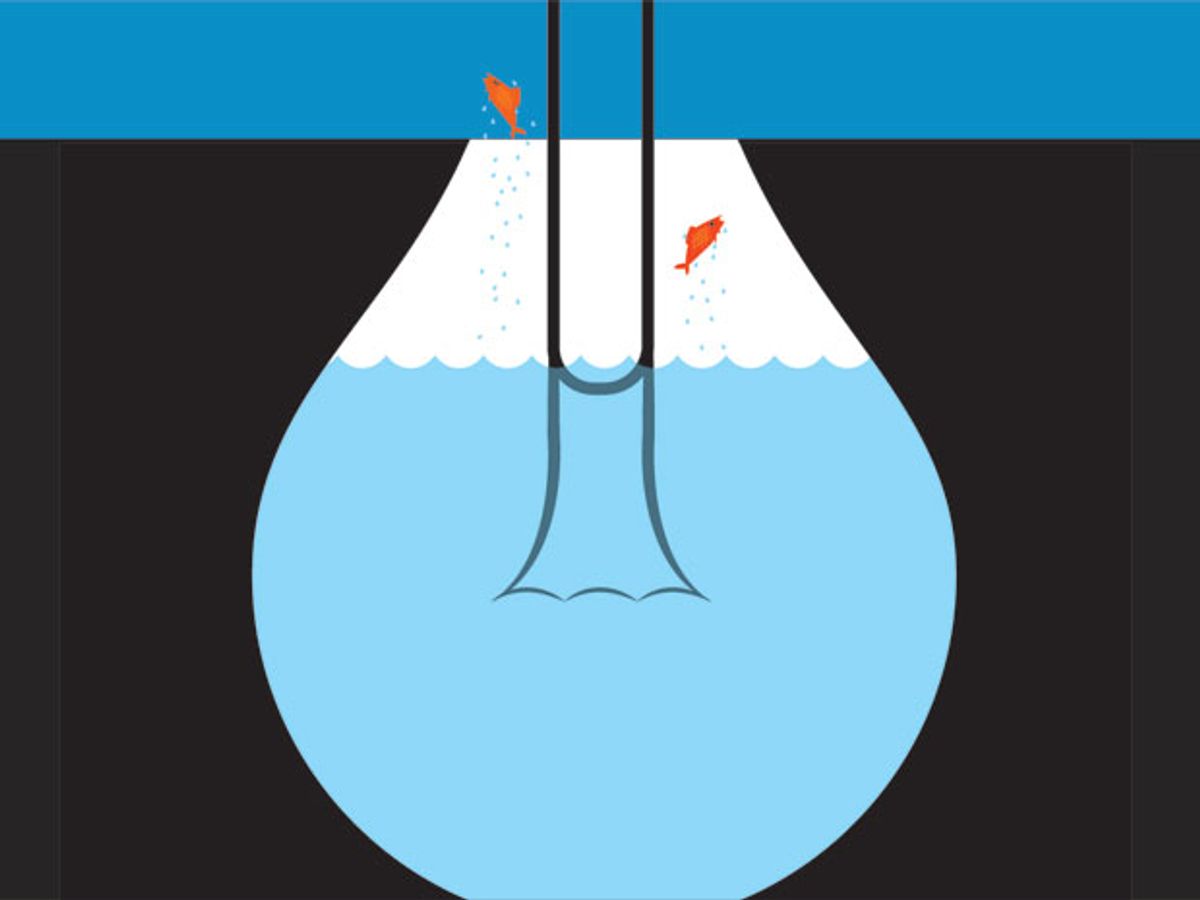Buried in wave power device company Ocean Power Technologies' latest quarterly report and press release is a seemingly backwards move: one major project in Australia has been terminated, while another signature project in Oregon is in the process of "winding down." A company determined to build commercial-scale wave power facilities is apparently not interested, at least at the present moment, in building commercial-scale wave power facilities. Instead, OPT will focus their efforts on "next generation designs," an idea that experts say is probably the only way to go at the moment.
"It seems quite reasonable to me for the MHK [marine and hydrokinetic] companies to use existing funds to seek better performance, improved reliability, and lower cost," says Bob Thresher, a research fellow at the National Renewable Energy Laboratory. He pointed out that with natural gas prices still so low, fighting for power purchase agreements and maintaining profitability is hard for all renewable energy sources, and especially for one with more immature technology.
Wave power's potential is undeniable, but progress toward deployment has been slow. In fact, with a temporary exception off the coast of Portugal in 2008 and 2009, there have been essentially no large-scale wave power facilities. There are testing facilities where companies plug in devices and run them, and smaller devices in the water, but an actual wave farm producing megawatts of grid-connected power has yet to surface. OPT's decisions this year to scale back its plans—a European deployment by the company was also pushed back toward 2015—fits right in with an industry struggling to get off the ground.
Earlier this summer, Bloomberg New Energy Finance predicted only 21 megawatts of wave power (the output of about three of the big new offshore wind turbines deploying in Europe these days) will be in the water by the end of the decade, a 72 percent drop from previous estimates. The field is littered with floundering or failed companies, such as WaveBob. As I've reported elsewhere, some think the field needs big players like GE, Siemens, and others to really dive in before any progress can be made; there needs to be a potential to lose money at first, which smaller companies can't handle.
George Hagerman, a senior research associate at the Virginia Tech Advanced Research Institute who has participated in Department of Energy assessments of wave power, points out that developing the technology and developing the commercial-scale project involve entirely different sets of skills.
Because wave energy technology is still in its infancy, experienced project developers who have those skills are reluctant to incur project financing obligations... there is so much uncertainty as to whether or not the technology will last the book life of the project [20-30 years] and what the maintenance and repair costs will be to keep the technology operating at its year-one efficiency over that entire period.
He adds that with offshore wind in Europe, the maturity of the technology and the decades of experience yields a field where one set of companies build the turbines, and a totally other set of companies—big utilities and power producers—are the ones financing and developing the projects.
OPT's move to focus on improving the tech rather than jumping in the water is thus likely a smart one. Unlike solar and wind power, there is not one design (nor even a few designs) universally agreed to be the best path forward. Designs differ dramatically, and it remains unclear which will eventually provide the best balance of cost, efficiency, and power production. OPT uses a buoy-like design, where the motion of the waves moves the device up and down on a piston; the company had been deemed among the frontrunners to get big projects in the water, along with Pelamis and it's snake-like attenuator design.
Thresher, of NREL, points out that natural gas costs are almost certain to rise in the future, which would help level the playing field for wave power. That playing field would look even better if the design wars were a bit more settled—again suggesting OPT's move is a reasonable one. "When MHK technology starts to look more promising with improved machines, they should be able to compete more effectively," Thresher says. "For the near term, it seems quite reasonable to me for them to focus on improving their technology with existing funds and wait for the demand for low carbon energy sources to grow."
Dave Levitan is the science writer for FactCheck.org, where he investigates the false and misleading claims about science that U.S. politicians occasionally make.



